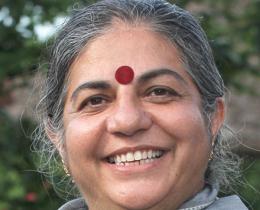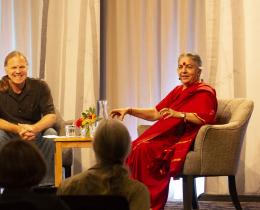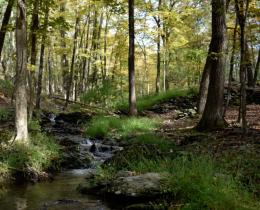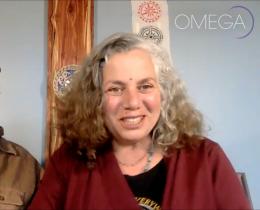Omega: How can people who might not garden, let alone farm, get involved in seed saving?
Ken: One of the challenges I found when I started the Hudson Valley Seed Library was helping people understand their role in seed saving. I really wanted to help people understand how their decisions have repercussions on seeds. I started to see seed saving as a spectrum.
The spectrum starts with awareness, which has been happening in a number of different areas. People are becoming more aware of where things come from and how things are made. What’s required to make the product? What are the factory conditions? How far does it travel? What is the value of that? What is the environmental impact? What is the social impact? Particularly, people have become more and more aware about food. I felt like that kind of awareness and thinking wasn’t happening around seeds.
If you’re buying a conventionally grown pepper that was grown using chemicals on a massive monocrop farm, that pepper came from a seed. So what are the agricultural and cultural practices you are supporting in buying that pepper? It affects the seed industry.
My hope is that on some level everybody has a little bit more awareness about where seeds come from, who is growing them, and what the local and global repercussions of those seeds are. Then they can start making more aware decisions about buying seeds for their garden, where they’re getting food, and what they’re putting on their plate. All of these decisions are affecting so many other people and the natural environment.
Part of this is learning about and digging deeper into the commons. In order to make the commons real, people have to learn to see these connections, to draw the lines between their everyday actions and the larger universal realm.
Omega: What’s the importance of saving seeds to the Hudson Valley Seed Library?
Ken: Part of the early thinking in starting the seed library was seeing the connection between seeds and books, between seeds and shared knowledge—looking around, thinking we don’t even know what we’re losing.
Sometimes we’re talking about one variety, like Hanks Xtra-Special Bean. That was one person’s dance with a variety over many years. If we’re not saving those seeds, we’re not only not saving the genetic story of that seed, we’re also losing that cultural food story.
Other times we’re talking about loss of genetic diversity. For example, we’ve gone from 50,000 varieties of wild rice in India to less than 50 right now. Here, we’re talking about saving the diversity of what exists because we don’t know what stories they have to tell us yet. We don’t know the role they’ll play in the future. If we’re just letting that diversity go, we’re missing out on potentially life-saving varieties as the climate changes.
We’re also thinking about saving seeds to create new varieties. We have to look forward and think about what characteristics and traits we might need to meet into the environmental and social issues we may be facing. We’re saving seeds, selecting them for new traits, and improving them over time.
Omega: Control of seeds is a key element of the seed freedom movement. What are some examples of efforts to create new seed varieties, keeping the commons in mind?
Ken: Control of new seeds is where you get into the contentious part of seed saving. If I’m changing a variety, should I be paid for that? Or control that in some way? Or am I really just engaging in 12,000 years of legacy that’s been handed to me in that seed, and I’m just adding a chapter to that story?
We’ve seen new developments in different models for protecting seeds people have developed and invested in. There’s a new group called the Open Source Seed Initiative. They are taking the open source model for technology and trying to apply it to seeds, to create an open source model for seeds. Another is the Organic Seed Alliance, where I’m a board member. They are producing new varieties cooperatively with multiple farmers and breeders.




